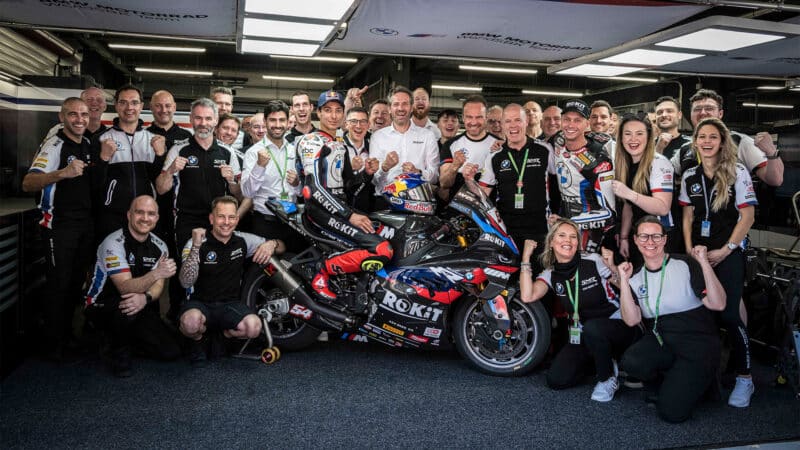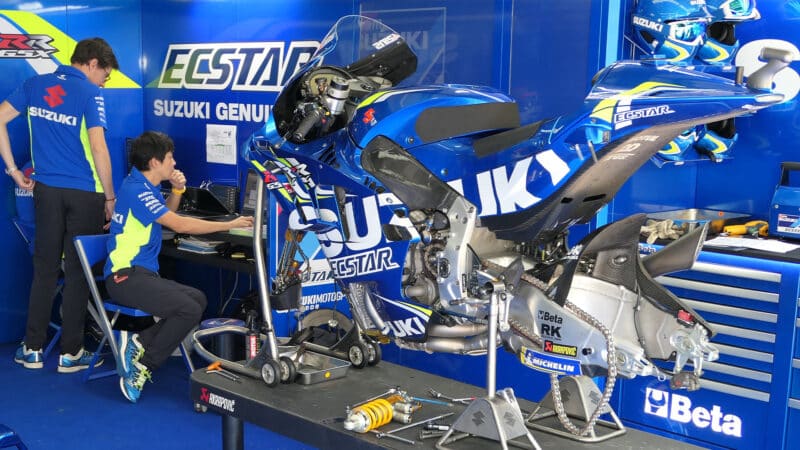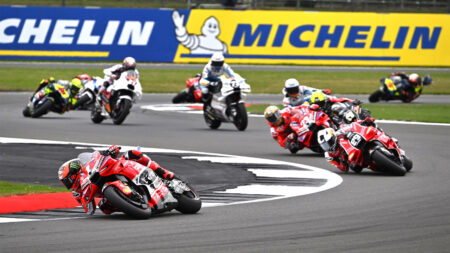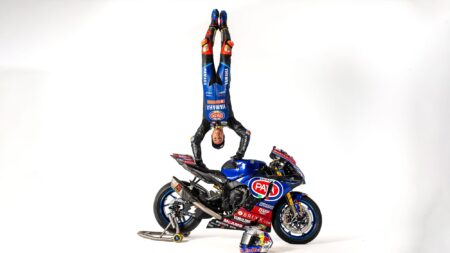The 850s will be slightly lighter, with smaller engines, and they will have significantly less torque, which could change the way they need to be ridden, just as the 800s needed to be ridden differently to the original 990cc MotoGP four-strokes.
Less weight and less torque should encourage higher corner speeds, because riders can’t rely on the monster torque of the 990s and 1000s to fire them out of turns. That may suit the finer handling inline-fours, which prefer rounder cornering lines, while the 990s and 1000s are at their best using tighter vee-shaped lines.
BMW engineers know lots about building high-powered racing engines, so they should be able to build a light, compact and powerful MotoGP engine. However, they will need to take note of Suzuki’s data and work with established MotoGP engineers who understand that the character required from a racing motorcycle engine is very different to that of a car engine.
And it’s so easy to get wrong, for what might seem a trivial reason to a car-engine designer. Consider the GSX-RR, which lost its way in 2017, when Suzuki engineers used a higher-mass crankshaft, in search of friendlier on-throttle corner-exit behaviour. Instead, the increased crank inertia made the bike difficult to stop and difficult to turn, costing riders around three tenths a lap, so the GSX-RR didn’t score a single podium that year.
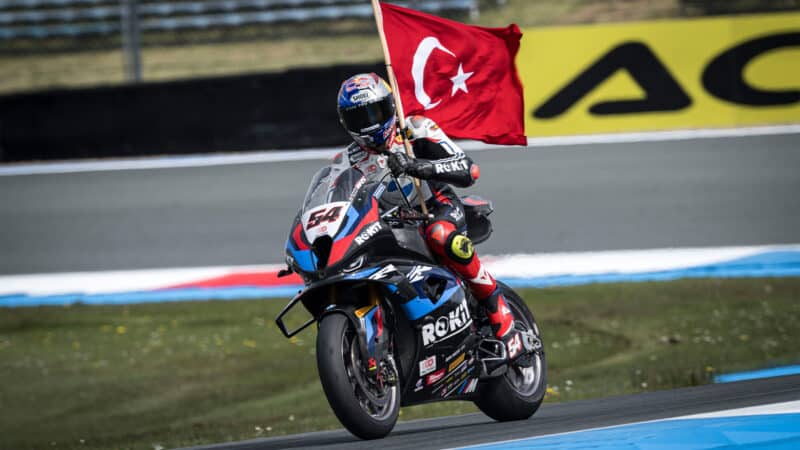
BMW’s Razgatlıoğlu has won 12 of 2024’s first 18 WSBK races and will surely be a candidate for the company’s first MotoGP line-up
Next comes chassis design. BMW hasn’t contested MotoGP for seven decades, so it knows nothing of what’s needed, aside from what it’s learned from a decade and a half in World Superbike, which is a very different world to MotoGP.
Most of all, BMW needs to learn about chassis stiffness – combining massive longitudinal rigidity, for braking and acceleration stability, with plenty of lateral flex, so the bike flexes when it’s on its side in corners, making the bike track the asphalt better for improved grip and turning. Suzuki’s data will be a huge help here, because the GSX-RR was the sweetest handling bike on the grid.
BMW’s WSBK project has made huge forward strides with its electronics knowhow in recent seasons. During its early years in the championship many of the company’s electronics engineers came from car racing, so although the budget was big, the concepts and strategies were all wrong for motorcycles.
BMW won’t learn a lot about downforce aerodynamics from Suzuki’s data, because the GSX-RR had the most minimal aero on the grid, relying instead on superb chassis balance and friendly torque delivery to win races. However, Suzuki’s CFD (computational fluid dynamics) data will still help BMW engineers, who already have experience of downforce aero from the M1000RR WSBK machine. And anyway, all MotoGP manufacturers have a major aero redesign ahead of them, because downforce aero will be substantially reduced from 2027.
The other vital performance factor that won’t be included in the data will be the rider. BMW used to be guilty of not spending enough budget on the most important aspect of bike racing, but Toprak Razgatlıoğlu’s arrival will surely have convinced the company that bike racing is still so much about the nut that holds the handlebars than the nut that holds the steering wheel.
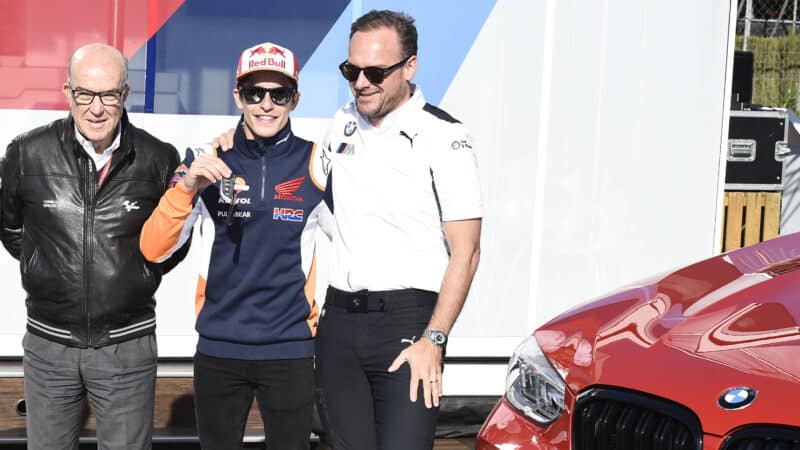
BMW Motorrad CEO Markus Flasch (right) with Dorna CEO Carmelo Ezpeleta and 2019 BMW M award winner Marc Marquez
The M1000RR scored only one victory during the 2021, 2022, 2023 WSBK season. So far this year, with Razgatlıoğlu onboard, the bike has taken 12 wins from the first 18 races. Whatever BMW is paying Razgatlıoğlu, he’s worth it and has totally transformed its WSBK project.
What we don’t know about the data deal is whether it includes computer modelling, which plays a massive part in achieving good performance. For example, this is one area where Ducati is way ahead of its rivals and this is one of the reasons why the Bologna brand is more dominant than ever in MotoGP.
A computer model of a racing motorcycle – sometimes called a virtual digital twin – is created by using data via mathematical models, computer simulations and physical experiments.
These computer models consist of multiple models: the engine and parts thereof, the suspension and parts thereof, the aerodynamics, the tyres and so on. These digital twins are run on computer models of racetracks, which consist of 3D scans of circuits, which include everything from layout to camber, right down to weather conditions.
The main requirement for creating useful computer models is the quantity of data. The more data engineers have the better they can see the reality, separate useful information from outliers and build better models. This is one reason why Yamaha absolutely had to increase its MotoGP presence to four bikes from next year, because it doesn’t get enough data from two bikes for accurate modelling.
So how many bikes will BMW put on the MotoGP grid? For many years Dorna has wanted 24 bikes – and no more than that – with six manufacturers fielding four bikes each. Since Suzuki withdrew there have only been 22 bikes and last year Dorna CEO Carmelo Ezpeleta announced that he wanted to keep the grid at that number. However, BMW bosses would be foolish not to demand four grid slots as a condition of their entry, which would take the grid back to 24 bikes and require one independent team to run BMWs.
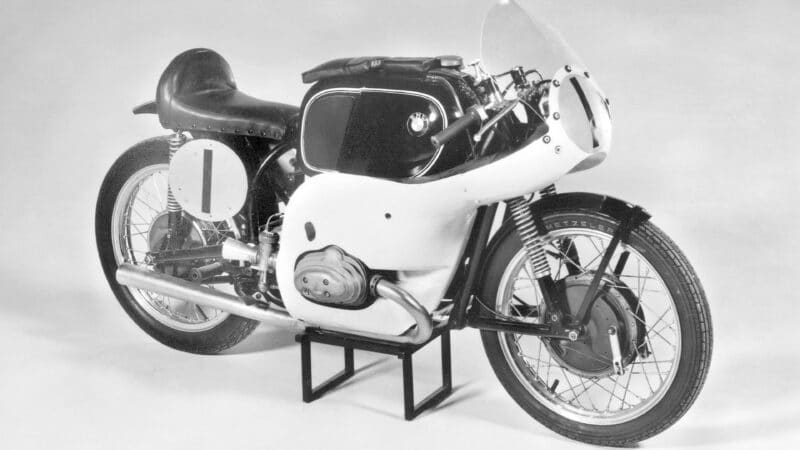
BMW’s last MotoGP bike – the RS500 flat twin of the 1950s
BMW
Dorna has long been desperate to get BMW into MotoGP, so it will surely bend to the company’s demands, because an upmarket brand like BMW will bring extra glitter to the paddock, which is exactly what Dorna – and probably Liberty from next year – want in MotoGP.
During the Silverstone weekend I made discrete enquiries with a number of MotoGP engineers from different manufacturers, asking them if BMW has been making contact with engineering staff who might lead its MotoGP project.
The answer was always, ‘No,’ which did surprise me, because if BMW MotoGP is going to happen the company will need to start signing experienced engineering staff very soon. It’s only two years and three months before official testing for the 2027 season commences, which isn’t long when the motorcycle needs to be designed, engineered and exhaustively tested before sharing the track with its rivals following the end of the 2026 season.

